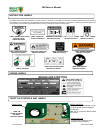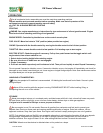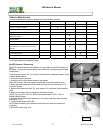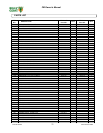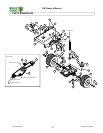
Part No 520187 Form No F071406A
15
FM Owner’s Manual
Fig. 17-2
Fig. 17-1
Fig. 17-3
BELT REPLACEMENT continued
Tools required: 1/2 Wrench or ratchet and 1/2 inch socket, adequate support for machine.
1. Remove the Blade Drive Belt (Steps 1-10: Blade Drive Belt Replacement Procedure).
2. Assure that spark plug wire is disconnected.
3. Support rear of unit to allow access to underside of the machine near the rear.
Note: Unit is heavy. Be sure support is adequate to prevent personal injury.
4. Observe the belt fingers (Item 63), position of idler and belt routing.
5. Remove the belt finger retaining nuts and bolts (Items 125 and 143).
6. Remove the belt finger and remove the belt from the transaxle pulley (Item 48).
7. Remove the belt from the drive idler (Item 105).
8. Remove the belt from the engine drive pulley (Item 85).
9. Install new belt on the top (small) engine pulley, drive idler and transaxle pulley using the
original belt position and routing.
10. Reposition and secure the belt finger (Item 63) using the original bolts, washers and nuts.
NOTE: Before installing the fasteners inspect them for wear and replace as necessary.
11. Reinstall the Blade Drive Belt (Steps 11-16: Blade Drive Belt Replacement Procedure).
Note: With clutch levers engaged, be sure belt guides do not touch belts after installation.
12. Replace the cover
13. Reconnect spark plug wire.
14. Start engine and check both belts for proper operation of blade drive system and mower
drive system.
WARNING: If the drive belt begins to squeal or slip, do not continue to operate your unit
until adequate adjustment or repair has been performed. Improper adjustment can cause drive
belt to slip and overheat, greatly reducing machine performance and transmission life.
CABLE ADJUSTMENTS
Brake Adjustment
The brake control cable is spring-loaded and requires no adjustment; however, the transaxle
brake is adjustable. When the mower is in neutral and can be pushed by hand without
depressing the brake lever, the transaxle brake needs adjustment.
Using a ½ inch wrench turn the adjusting nut ¼ turn clockwise (see figure 17-1).
With the machine in neutral and:
1. The brake lever not depressed, the brake should be on and inhibit the machine from being
rolled by pushing.
2. The brake lever depressed the brake should be off and the machine should roll uninhibited
by the brake.
Transaxle Drive Control Cable Adjustment
When the transaxle drive belt slips, the drive control cable needs to be adjusted or the belt
needs to be replaced with a new belt.
Cable Adjustment:
1. Using a 3/8” wrench, remove the rear access door (Item 51).
2. Using a ½ “ open end wrench, turn the inside adjusting nut counter-clockwise and back it off
1/8", then tighten the outboard adjusting nut against the support bracket (see figure 17-2).
3. Check for proper operation. If the operation is not correct, repeat step 2.
4. Replace the access door.
The drive control cable adjustment should be the minimum amount required so the belt does
not slip when the drive is engaged.
Blade Drive Control Cable Adjustment
When the blade drive control lever is depressed, the blades should turn and the blade drive
belt should not slip. When the cable is properly adjusted the tension spring on the end of the
control cable will open slightly (only enough for a piece of paper to slip between the coils). See
figure 17-3.
Cable Adjustment:
1. Remove the deck belt cover (Item 81).
2. Observe the tension spring on the end of the cable when the blade drive lever is depressed.
The spring should just break open.
3. If adjustment is required, using a ½” open end wrench, turn the inboard adjustment nut
counter-clockwise and back it off 1/8" (Figure 4). Then tighten the outboard adjustment nut
against the cable support bracket (Item 49).
4. Check the spring tension with the blade drive lever depressed.
5. Readjust the control cable as needed for proper tension.
6. Replace the deck belt cover.
Note: Too much tension will shorten belt and bearing life and too little tension will allow the
belt to slip.



